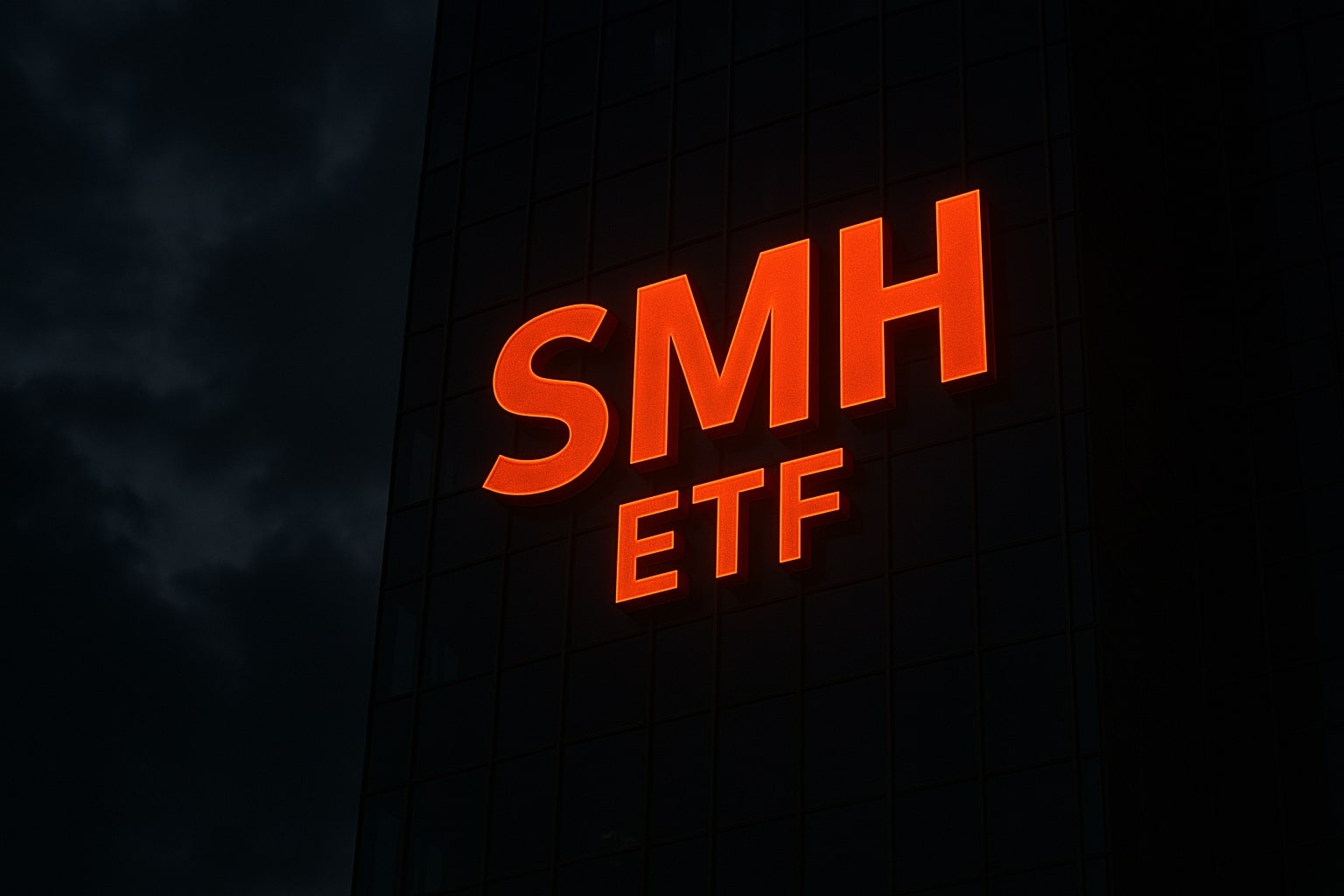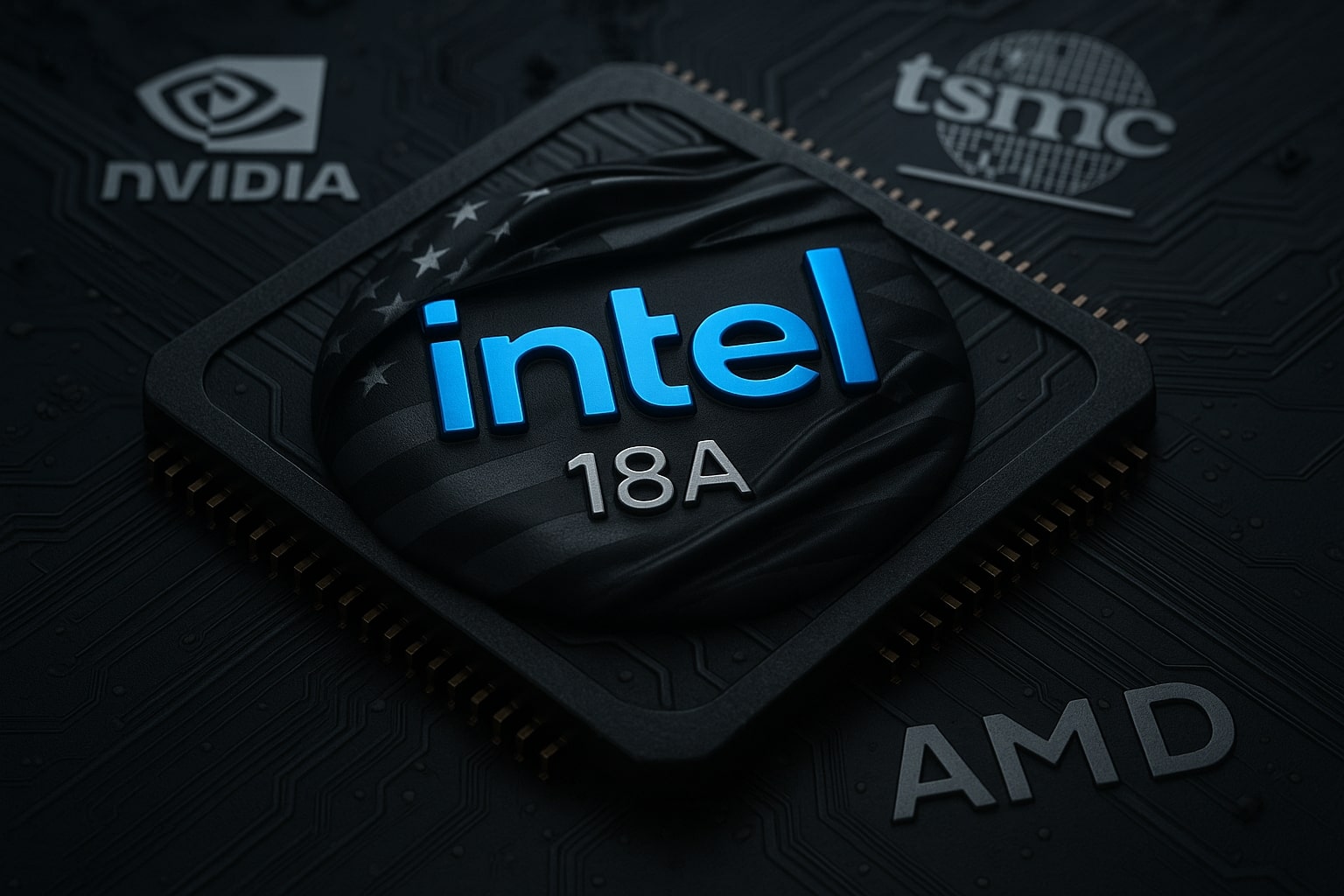VanEck Semiconductor ETF (NASDAQ:SMH) – America’s Chip Powerhouse Fueling the AI Decade
The VanEck Semiconductor ETF (NASDAQ:SMH) has emerged as one of 2025’s most compelling performers, showcasing the structural transformation of global technology supply chains and America’s semiconductor resurgence. As of November 5, 2025, SMH trades around $359.50, up 1.91% on the day and more than 42% year-to-date, comfortably outperforming both the S&P 500 (+8.6%) and Nasdaq 100 (+11.9%). With $35.49 billion in assets under management and a 0.35% expense ratio, SMH remains one of the most liquid semiconductor ETFs, averaging over 8 million shares in daily volume. The ETF’s dominance highlights how institutional capital is consolidating around U.S. semiconductor leadership amid record AI infrastructure spending and government incentives.
Portfolio Composition and Strategic Weighting
SMH mirrors the MVIS U.S. Listed Semiconductor 25 Index, focusing on the 25 largest and most actively traded semiconductor companies. Approximately 80% of holdings are U.S.-based, while the remaining 20% are spread between Taiwan, the Netherlands, and Bermuda—regions that play vital roles in chip fabrication and design. The top 10 holdings account for nearly 74% of total fund weight, led by NVIDIA (NVDA), Taiwan Semiconductor Manufacturing (TSM), Broadcom (AVGO), AMD, and Intel (INTC). Collectively, these names trade around 35× 2025 earnings, compressing to 23× 2027 projections as their combined EPS growth rate exceeds 45%, signaling the sector’s sustained profitability through the AI cycle.
Liquidity, Efficiency, and Market Accessibility
The ETF’s liquidity advantage remains a decisive factor for institutions and active traders. Compared to Deutsche Bank’s CHPS ETF, which trades roughly 5,000 shares per day, SMH’s 8 million-share daily average volume ensures narrow spreads and efficient execution. It also outpaces Vanguard’s VGT ETF, which averages about 528,000 shares, reinforcing SMH’s position as the go-to vehicle for scalable exposure. Despite a higher expense ratio than VGT (0.35% vs 0.09%), SMH’s return profile justifies the premium—its nearly 50% YTD gain far outstrips VGT’s 28%.
U.S. Semiconductor Policy Tailwinds
SMH’s bullish trajectory is deeply tied to American industrial policy. The CHIPS and Science Act of 2022, extended through 2032, provides billions in subsidies and a 25% tax credit for domestic chip manufacturing. The objective: triple U.S. semiconductor output and secure technological sovereignty by the next decade. The act has already catalyzed over $200 billion in private-sector commitments from Intel, Samsung, TSMC, NVIDIA, and Texas Instruments, all expanding or building new facilities across Arizona, Texas, and New York. Simultaneously, U.S. tariffs on China have redirected supply chains, boosting domestic capacity as the U.S. pursues self-sufficiency in advanced chip production.
AI Data Center Expansion and Demand Drivers
AI remains the strongest growth vector. In 2025 alone, Microsoft, Amazon, Alphabet, and Meta allocated more than $291 billion in capital expenditures toward data-center expansion—an increase of 67% year-over-year. NVIDIA’s planned $100 billion investment into its AI compute infrastructure and OpenAI’s partnership to deploy 10 gigawatts of NVIDIA systems highlight the scale of future chip demand. Each AI model iteration requires exponentially more silicon, driving record orders for high-performance GPUs, memory modules, and networking semiconductors—all key components within SMH’s portfolio.
Performance Versus Peers and Market Dynamics
Compared with sector peers, SMH maintains a superior long-term track record. The SPDR Semiconductor ETF (XSD) employs equal weighting and offers greater diversification but underperforms SMH’s concentrated approach, which captures leadership-driven returns. The Invesco Semiconductor ETF (PSI) uses a quantitative model incorporating momentum and earnings expansion but lacks SMH’s liquidity depth. Over the past five years, SMH has outperformed SPY, QQQ, PSI, and XSD, confirming that concentration in market leaders has delivered higher risk-adjusted returns.
Geopolitical Context and Risk Factors
Despite structural tailwinds, geopolitical exposure remains a crucial variable. Taiwan still produces roughly 44.2% of advanced chips imported into the United States, with China accounting for 16.9%. Any escalation in the Taiwan Strait could severely disrupt the global semiconductor supply chain. Analysts project that if China were to act militarily before 2027, global chip supply could be cut by more than half, instantly pressuring margins across the SMH portfolio. Meanwhile, delays in U.S. factory buildouts could postpone the CHIPS Act’s benefits, particularly as new fabs—often costing $10–20 billion each—require years to reach full production capacity.
Valuation Landscape and Earnings Momentum
The ETF’s underlying holdings demonstrate robust forward visibility. Based on consensus forecasts, the top 10 companies within SMH are expected to grow earnings by an average of 126.8% between 2025–2027, pushing their blended P/E ratio down from 63× to 24× as operating leverage improves. NVIDIA, AMD, and Broadcom continue to drive much of this expansion, benefiting from surging AI chip sales, enterprise cloud demand, and next-generation edge computing adoption. Even Micron (MU) and Lam Research (LRCX) have recovered sharply from cyclical troughs, with improving memory pricing and equipment orders feeding back into ETF performance.
Macro Environment and Market Sensitivity
The semiconductor sector’s performance remains closely correlated with macroeconomic cycles. Rising U.S. yields and a firm dollar can temporarily pressure valuations, but long-term fundamentals remain intact. The U.S. 10-year Treasury yield, currently around 4.14%, has not dampened tech capital expenditure growth, underscoring secular demand resilience. Analysts view semiconductors as the “new oil”—a strategic commodity underpinning every sector from defense to healthcare. As global digitalization accelerates, chip capacity shortages continue to serve as a structural driver for profitability within SMH’s holdings.
Market Sentiment, Technicals, and Capital Flows
Investor sentiment toward SMH remains bullish but measured. Institutional ownership is high, led by Vanguard, BlackRock, and Fidelity, all of which increased holdings in Q3 2025. Options data indicate that speculative activity remains balanced—put/call ratios near 1.1 reflect cautious optimism rather than exuberance. Technically, SMH consolidates above key support at $352, with upside resistance forming near $372, its 52-week high. Sustained accumulation at current levels suggests institutional positioning ahead of the next earnings cycle.
Outlook and Investment Thesis
Looking ahead to 2026, the outlook for SMH remains bullish. The ETF is projected to reach $430 per share, supported by ongoing CapEx expansion, policy incentives, and EPS acceleration among its top components. While short-term volatility may persist due to rate fluctuations or geopolitical headlines, the structural case for semiconductors as the backbone of the digital economy is unshaken. The U.S. industrial revival, AI computing wave, and domestic manufacturing incentives combine to reinforce SMH’s leadership among growth ETFs.
Verdict: Strong Buy – SMH Poised to Extend Leadership Through 2026
At $359.50, NASDAQ:SMH offers investors a high-conviction, large-cap growth exposure to America’s semiconductor resurgence. Supported by fiscal policy, global AI adoption, and rising institutional demand, SMH represents a rare intersection of liquidity, innovation, and profitability. With projected EPS growth exceeding 40%, robust onshoring investment, and expanding global TAM, SMH remains a Strong Buy, targeting $430–$450 by 2026 as the U.S. semiconductor ecosystem cements its dominance in the AI decade.
That's TradingNEWS




















